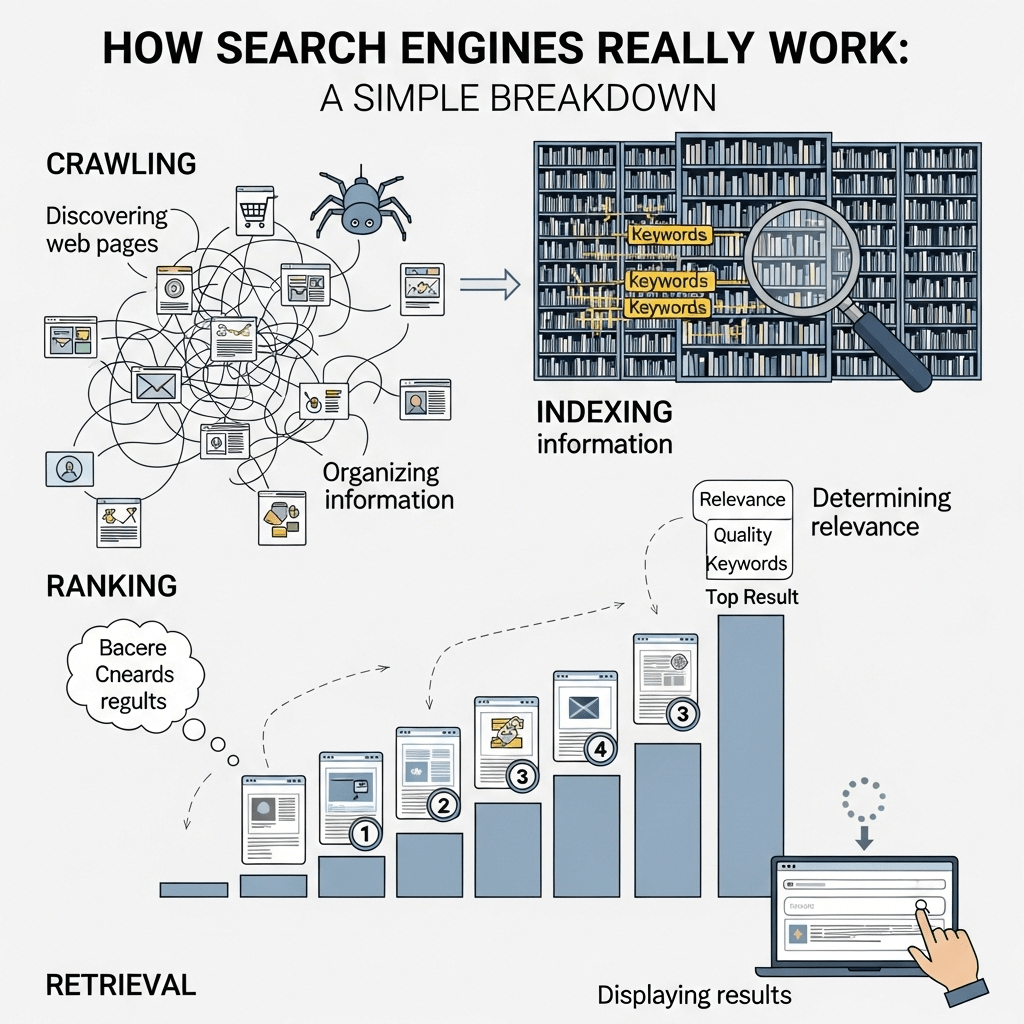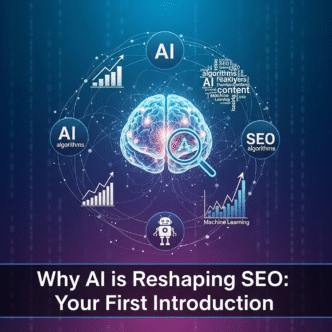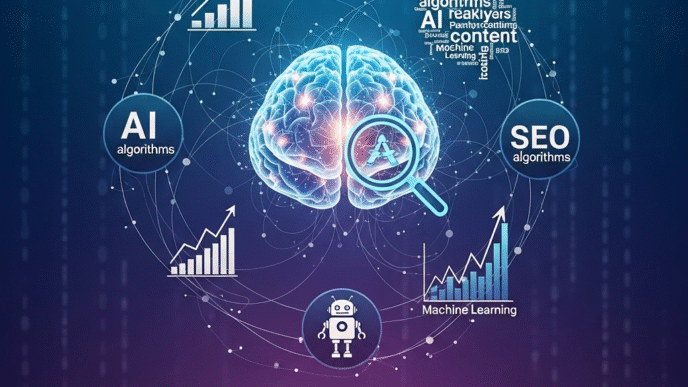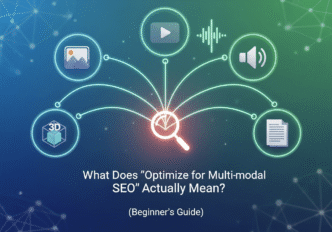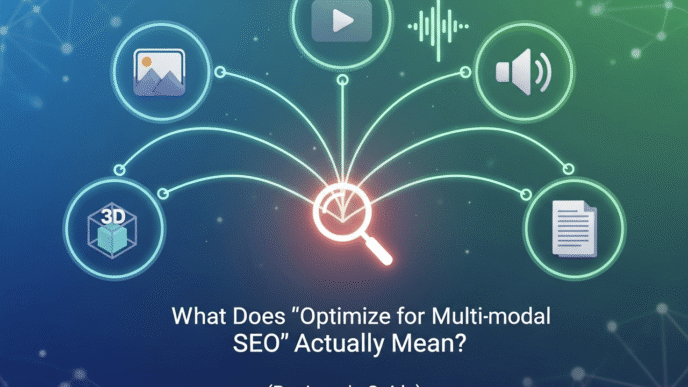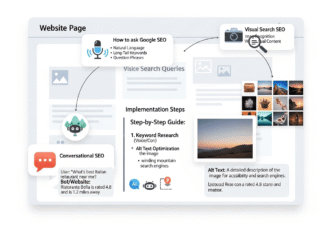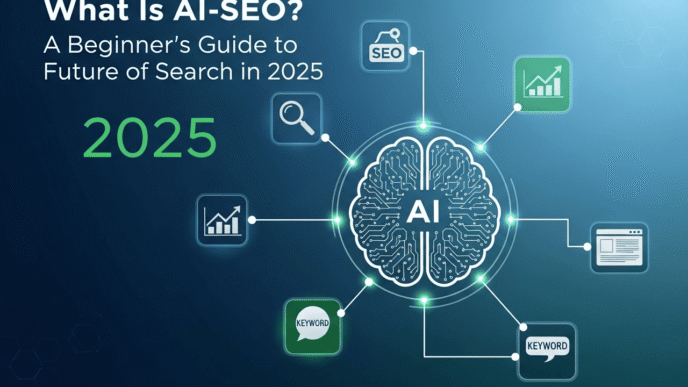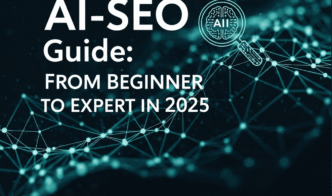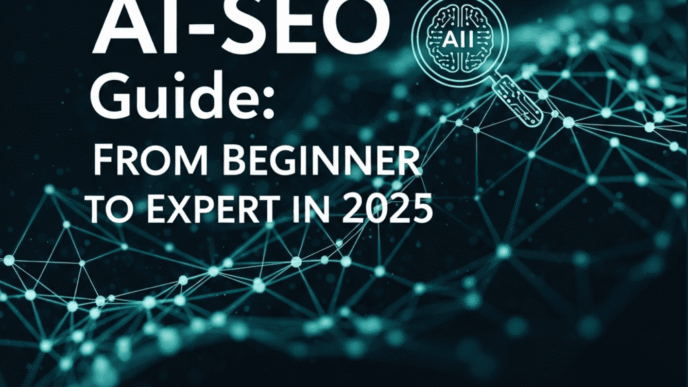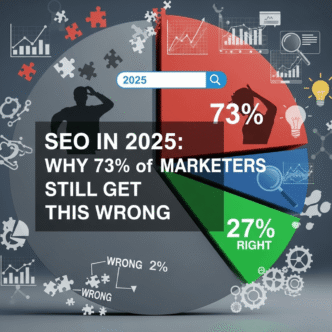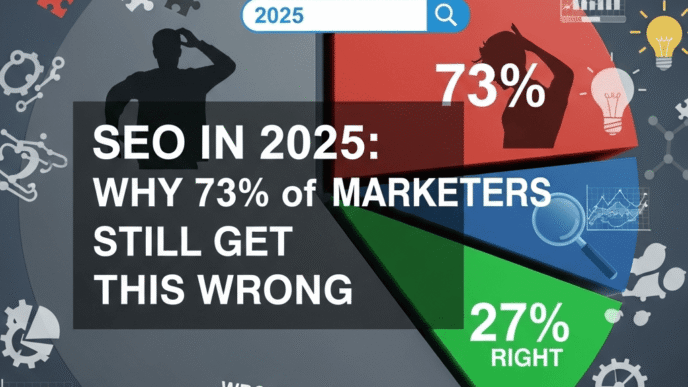Last Updated: August 2025 | Reading Time: 20-25 minutes
Ever wonder how Google magically finds exactly what you’re looking for in 0.32 seconds from billions of web pages?
You type “best pizza near me” and BOOM – there’s Tony’s Pizza Shop three blocks away with perfect reviews and their phone number ready to call. But here’s what blows my mind: 99% of internet users have absolutely no clue how search engines work their magic behind the scenes.
It’s like watching a master magician perform incredible tricks night after night, but never getting to peek behind the curtain to see the real artistry. You enjoy the amazing results, but the sophisticated technology powering your daily searches remains completely mysterious.
Understanding how search engines work isn’t just fascinating from a technical perspective – it’s absolutely critical knowledge for anyone who wants to succeed online in 2025. This comprehensive guide will take you on a complete journey through the search engine universe, from basic concepts any beginner can understand to advanced technical details.
Ready to become a search engine expert? Let’s dive deep into the surprisingly elegant (yet brilliantly complex) world of search technology!
Table of Contents
Toggle
What Are Search Engines? The Foundation of Internet Discovery {#what-are-search-engines}
Think of search engines as the world’s most efficient librarians who never sleep, never take breaks, and somehow know the exact location of every single book, article, and scrap of paper in a library containing over 1.7 billion websites and growing.
But here’s what makes them truly remarkable: they’re not just finding information – they’re intelligently ranking everything based on what they predict you’ll find most helpful, relevant, and trustworthy.
The Global Search Engine Landscape
| Search Engine | Global Market Share | Daily Searches | Primary Strength |
|---|---|---|---|
| 91.9% | 8.5 billion | Most sophisticated algorithms | |
| Bing | 3.0% | 1.2 billion monthly users | Microsoft integration |
| Yahoo | 1.2% | 650 million monthly users | Content aggregation |
| DuckDuckGo | 0.6% | 100 million | Privacy-focused |
Why Search Engines Matter More Than Ever
The statistics tell an incredible story:
- 68% of all online experiences begin with a search engine (BrightEdge, 2024)
- 53% of website traffic comes from organic search results
- 75% of users never scroll past the first page of search results
- 46% of Google searches are looking for local information
- SEO leads have a 14.6% close rate vs. 1.7% for outbound leads
Pro Tip: Search engines aren’t just technology tools – they’re the primary gateway between businesses and customers in the digital economy. Understanding how they work gives you a massive competitive advantage.
The 3 Core Processes: Crawling, Indexing, and Ranking {#three-core-processes}
Understanding how search engines work requires grasping three fundamental processes that happen continuously, 24/7, across the entire internet. Think of these as the three-stage assembly line that transforms chaotic web content into organized, searchable information.
Process Overview: The Search Engine Pipeline
Raw Web Content → CRAWLING → INDEXING → RANKING → Search Results
| Process | Primary Function | Timeline | Key Output |
|---|---|---|---|
| Crawling | Discovery and content collection | Continuous, 24/7 | Raw webpage data |
| Indexing | Analysis and organization | Minutes to hours | Structured database entries |
| Ranking | Quality assessment and ordering | Real-time, per query | Ranked result lists |
Real-World Process Example
When you publish a new blog post about “Best Coffee Brewing Methods 2025”:
Step 1: Discovery (Crawling)
- Google’s crawler visits your sitemap (within hours)
- Downloads complete page content, images, and metadata
- Follows all links to discover connected content
Step 2: Analysis (Indexing)
- Content analyzed for topic, quality, and relevance signals
- Keywords and semantic themes identified and cataloged
- Page categorized and quality score assigned
Step 3: Competition (Ranking)
- New page competes with existing coffee brewing content
- Algorithm evaluates relevance, authority, and user experience
- Initial ranking position assigned and adjusted over time
Timeline Reality Check:
- Crawling: 2-48 hours for established sites
- Indexing: 1-7 days for quality content
- Initial Ranking: 1-4 weeks for competitive keywords
- Mature Rankings: 3-12 months for significant positions
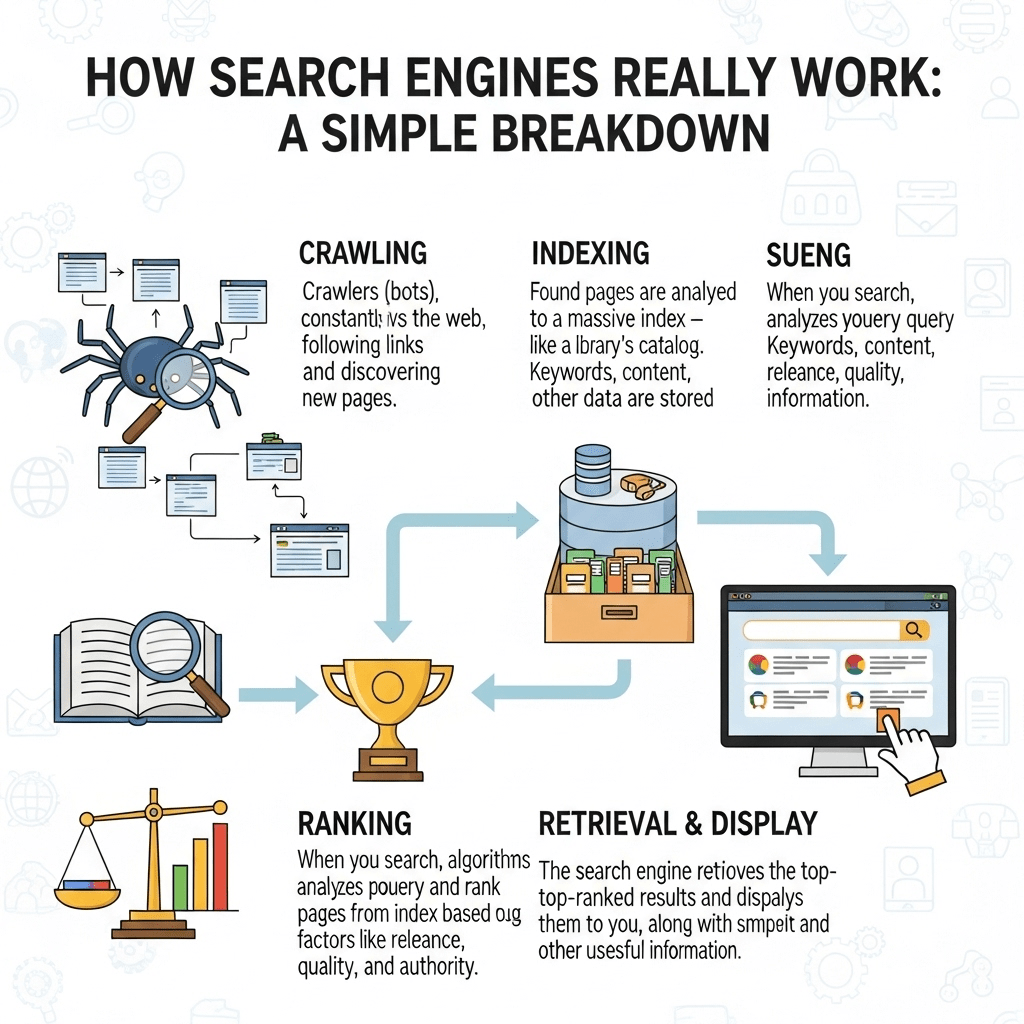
Web Crawling Deep Dive: How Search Engines Discover Content {#web-crawling}
Web crawling is like having an army of tireless digital explorers mapping an infinite, constantly changing maze where new rooms appear daily and existing rooms get remodeled without notice.
What Are Web Crawlers?
Web crawlers (also called spiders, bots, or robots) are automated programs that systematically browse the internet, following links from page to page, downloading content, and reporting back to search engine databases.
Major Search Engine Crawlers
| Crawler Name | Search Engine | Crawling Behavior |
|---|---|---|
| Googlebot | Most comprehensive, frequent crawling | |
| Bingbot | Microsoft Bing | Thorough but less frequent |
| Slurp | Yahoo | Focuses on news and trending content |
| DuckDuckBot | DuckDuckGo | Privacy-focused crawling |
How Do Search Engines Crawl Websites?
Phase 1: Seed URL Collection
Crawlers start with seed URLs – known, trusted starting points:
- Popular websites with established authority
- Previously crawled sites from past sessions
- Submitted sitemaps from website owners
- Social media links and viral content
Phase 2: Systematic Link Following
- Download the complete webpage (HTML, CSS, JavaScript)
- Parse all links found on the page
- Add new URLs to the crawling queue
- Prioritize URLs based on authority and relevance signals
- Repeat the process for each discovered page
Phase 3: Content Analysis and Storage
Technical Elements Examined:
- HTML structure and semantic markup
- Page loading speed and performance metrics
- Mobile responsiveness and user experience
- Security protocols (HTTPS, SSL certificates)
Content Elements Analyzed:
- Text content and keyword density
- Image alt text and multimedia descriptions
- Internal link structure and navigation
- External link quality and relevance
Crawling Frequency Factors
High-Frequency Crawling (Daily):
- News websites and frequently updated content
- High-authority domains with strong backlink profiles
- E-commerce sites with inventory changes
Medium-Frequency Crawling (Weekly):
- Established business websites with occasional updates
- Blog sites with weekly publishing schedules
Low-Frequency Crawling (Monthly):
- New websites without established authority
- Static sites with minimal content updates
- Sites with technical issues blocking proper crawling
Optimizing for Better Crawling
Technical Optimization:
- [ ] Create comprehensive XML sitemap
- [ ] Fix broken links and eliminate 404 errors
- [ ] Optimize server response times (under 200ms)
- [ ] Use proper redirect codes (301 for permanent)
- [ ] Configure robots.txt to guide crawler behavior
Content Structure:
- [ ] Create logical internal linking between related pages
- [ ] Use descriptive anchor text in internal links
- [ ] Implement breadcrumb navigation
- [ ] Update content regularly to encourage frequent crawling
Pro Tip: You can see exactly how search engines crawl your website by checking Google Search Console’s “Coverage” section. This shows crawling frequency, errors, and discovered pages.
Search Engine Indexing Process: From Raw Data to Organized Knowledge {#indexing-process}
After web crawling discovers content, the indexing process transforms raw webpage data into organized, searchable information. Think of indexing as the difference between having a massive pile of unsorted books versus a perfectly organized library.
What Is Search Engine Indexing Process?
Search engine indexing is the sophisticated process of analyzing, categorizing, and storing web content in massive databases that can be searched instantly. Modern search indexes contain over 130 trillion web pages and process 20+ petabytes of data daily.
Phase-by-Phase Indexing Breakdown
Phase 1: Content Parsing and Understanding
Text Analysis:
- Language detection and character encoding identification
- Keyword extraction and topic modeling
- Semantic analysis to understand meaning beyond keywords
- Content quality assessment based on multiple factors
Structural Analysis:
- HTML structure parsing (headings, paragraphs, lists)
- Link analysis (internal and external link quality)
- Image and multimedia content analysis
- Schema markup and structured data interpretation
Phase 2: Quality and Trust Assessment
Content Quality Signals:
- Originality: Is content unique or copied from elsewhere?
- Comprehensiveness: Does it thoroughly cover the topic?
- Expertise: Does the author demonstrate knowledge and authority?
- User value: Does it genuinely help people solve problems?
Technical Quality Signals:
- Page loading speed and Core Web Vitals performance
- Mobile-friendliness and responsive design quality
- Security (HTTPS implementation and certificate validity)
- Accessibility (proper alt text, heading structure)
Phase 3: Categorization and Classification
Topic Classification:
- Primary topic identification (e.g., “coffee brewing methods”)
- Subtopic mapping (e.g., “pour-over,” “French press,” “espresso”)
- Industry categorization (food & beverage, lifestyle, how-to)
- Intent classification (informational, commercial, navigational)
Content Type Classification:
- Format identification (article, product page, video)
- Content depth (comprehensive guide vs. brief mention)
- Update frequency (news, evergreen, seasonal)
- Audience level (beginner, intermediate, expert)
Indexing Timeline and Factors
| Content Type | Initial Indexing | Full Processing | Ranking Eligibility |
|---|---|---|---|
| News Articles | 5-30 minutes | 1-2 hours | Immediate |
| Blog Posts | 1-24 hours | 1-7 days | 1-4 weeks |
| Product Pages | 2-48 hours | 3-14 days | 2-8 weeks |
| New Websites | 3-30 days | 2-12 weeks | 3-6 months |
Factors Affecting Indexing Speed:
- Website authority and crawling frequency
- Content quality and uniqueness
- Technical performance and accessibility
- Internal linking and discoverability
Common Indexing Problems and Solutions
Problem 1: Pages Not Getting Indexed
Common Causes:
- Duplicate content or very similar to existing pages
- Low content quality or thin content issues
- Technical barriers (robots.txt blocking, noindex tags)
- Poor internal linking making pages hard to discover
Solutions:
- [ ] Create unique, valuable content that solves specific problems
- [ ] Fix technical issues blocking crawler access
- [ ] Improve internal linking to help discovery
- [ ] Submit URLs manually through Search Console
Problem 2: Slow Indexing Speed
Contributing Factors:
- New website without established authority
- Infrequent content updates reducing crawl priority
- Technical performance issues slowing processing
Acceleration Strategies:
- [ ] Publish content consistently to establish crawling patterns
- [ ] Build high-quality backlinks from relevant sources
- [ ] Optimize technical performance for faster processing
- [ ] Engage on social media to create discovery signals
Search Engine Ranking & Algorithm Systems: The Intelligence Behind Results {#ranking-algorithms}
Now we reach the most fascinating part: how Google ranks web pages and the sophisticated search engine algorithms that determine what you see when you search.
Understanding Search Engine Algorithms
Search engine algorithms are incredibly sophisticated decision-making systems that evaluate and rank web content using hundreds of different factors. Modern algorithms are:
- Multi-layered systems with specialized components
- Machine learning-powered with continuous self-improvement
- Context-aware understanding user intent and situation
- Quality-focused prioritizing user satisfaction
The Google Algorithm Ecosystem
| Algorithm Component | Launch Year | Key Innovation |
|---|---|---|
| PageRank | 1996 | Foundation of link-based ranking |
| Panda | 2011 | Penalized thin, low-quality content |
| Penguin | 2012 | Identified manipulative link building |
| Hummingbird | 2013 | Focus on user intent vs. keywords |
| RankBrain | 2015 | AI-powered query interpretation |
| BERT | 2019 | Better conversational query understanding |
| MUM | 2021 | Multi-modal understanding |
Core Ranking Factors: What Really Matters
Tier 1: Critical Factors (60% of ranking influence)
Content Relevance and Quality (25%)
- Topic comprehensiveness and search intent satisfaction
- Content originality and expertise demonstration
- User engagement signals and helpfulness
Backlink Authority and Trust (20%)
- Linking domain authority and trustworthiness
- Link relevance and natural linking patterns
- Link diversity and fresh link acquisition
Technical Performance (15%)
- Page loading speed and Core Web Vitals
- Mobile optimization and security (HTTPS)
- Crawlability and user experience signals
Tier 2: Important Factors (30% of ranking influence)
Content Freshness and Updates (10%)
- Publication recency for time-sensitive topics
- Content update frequency and maintenance
- Historical performance and sustained quality
User Experience and Engagement (10%)
- Click-through rates from search results
- Bounce rates and time spent on page
- Social sharing signals and community engagement
Brand Authority and Recognition (10%)
- Brand search volume and direct navigation
- Industry recognition and media mentions
- Author expertise and credentials (E-A-T signals)
Real-World Ranking Example
Three competing coffee brewing articles analysis:
Competitor A (Ranks #1):
- Content: 3,500-word comprehensive guide with detailed instructions
- Backlinks: 47 high-quality links from industry sites
- User Engagement: 4.2-minute average time, 15% bounce rate
- Technical: 1.8-second loading time, perfect mobile optimization
- Author: Professional barista with verified expertise
Competitor B (Ranks #4):
- Content: 1,200-word basic article lacking depth
- Backlinks: 12 moderate-quality links
- User Engagement: 2.1-minute time, 45% bounce rate
- Technical: 3.2-second loading time, basic mobile-friendly
- Author: General lifestyle blogger, minimal coffee expertise
Competitor C (Ranks #12):
- Content: 800-word promotional article
- Backlinks: 3 low-quality directory links
- User Engagement: 1.3-minute time, 67% bounce rate
- Technical: 4.8-second loading time, poor mobile experience
- Author: Unknown author, no demonstrated expertise
Key Insights: Content depth, backlink quality, user engagement, and technical performance clearly differentiated ranking positions.
Future of Search Technology: AI, Voice, and Beyond {#future-trends}
The future of how search engines work is being shaped by rapid advances in artificial intelligence, changing user behaviors, and emerging technologies.
AI-Powered Search Evolution
Current AI Integration:
- Google’s LaMDA and PaLM: Powering conversational search experiences
- Microsoft’s GPT integration: Enhancing Bing with ChatGPT capabilities
- Search Generative Experience (SGE): AI-generated answers alongside traditional results
Near-Future Developments (2025-2027):
- Conversational search interfaces becoming primary interaction method
- Multi-turn query handling for complex research tasks
- Real-time fact-checking integrated into AI responses
- Source attribution and credibility scoring for AI-generated content
Voice Search Revolution
Current Voice Search Statistics:
- 50% of adults use voice search daily (2024)
- Voice commerce expected to reach $40 billion by 2025
- Voice searches are 3x more likely to be local than text searches
Voice Search Behavior Changes:
- Longer, more conversational queries: “What are the best restaurants near me that are open right now?”
- Question-based format: Starting with “What,” “Where,” “How,” “When”
- Natural language patterns: Speaking as if talking to a person
- Context-dependent: Assuming search engines remember previous queries
Multimodal Search Advancement
Visual Search Evolution:
- Image-to-information pipeline: Point camera at objects for instant information
- Visual question answering: “What style is this building?” with photo input
- Visual shopping: Find products by photographing similar items
Audio Search Capabilities:
- Sound identification: Humming tunes to find song information
- Environmental audio: Identifying bird calls, mechanical sounds
- Voice command sophistication: Complex, multi-part instructions
Preparing for Future Search
Content Strategy Adaptation:
- Conversational content creation: Writing to answer natural language questions
- Comprehensive topic coverage: Being the definitive source on subjects
- Multi-format content: Text, visual, audio, and interactive elements
Technical Optimization Priorities:
- API-first content management: Enabling multi-platform content distribution
- Structured data mastery: Rich markup for AI understanding
- Performance excellence: Ultra-fast loading across all devices
Implementation Guide: Optimizing for Modern Search Engines {#implementation-guide}
Now let’s translate knowledge into actionable strategies for improving your website’s search visibility.
Phase 1: Technical Foundation (Weeks 1-4)
Week 1: Search Engine Access Optimization
- [ ] Audit robots.txt file for accidental blocking
- [ ] Create comprehensive XML sitemap
- [ ] Fix broken internal links
- [ ] Implement proper redirects
- [ ] Check server response times (target under 200ms)
Week 2: Content Structure Optimization
- [ ] Create logical site hierarchy
- [ ] Implement breadcrumb navigation
- [ ] Design internal linking strategy
- [ ] Optimize URL structure
- [ ] Plan content clusters
Week 3: On-Page Optimization
- [ ] Craft unique title tags (50-60 characters)
- [ ] Write compelling meta descriptions (150-160 characters)
- [ ] Structure content with proper headings
- [ ] Optimize images with descriptive filenames and alt text
- [ ] Implement schema markup
Week 4: Performance Optimization
Core Web Vitals Focus:
- [ ] Largest Contentful Paint: Optimize main content loading (under 2.5s)
- [ ] First Input Delay: Improve responsiveness (under 100ms)
- [ ] Cumulative Layout Shift: Minimize visual instability (under 0.1)
Phase 2: Content Strategy (Weeks 5-16)
Month 2: Strategic Content Creation
- [ ] Conduct comprehensive keyword research
- [ ] Analyze search intent for target keywords
- [ ] Create content cluster strategy
- [ ] Plan editorial calendar with consistent publishing
Month 3: Authority Building
Link Building Strategies:
- [ ] Create linkable assets (guides, research, tools)
- [ ] Build industry relationships through networking
- [ ] Guest posting on relevant, high-authority sites
- [ ] Resource page link building
- [ ] Broken link building opportunities
Month 4: User Experience Enhancement
- [ ] Improve site navigation
- [ ] Optimize for mobile users
- [ ] Enhance page loading speed
- [ ] Create engaging, scannable content
- [ ] Implement clear calls-to-action
Measurement and Optimization
Key Performance Indicators:
- Organic traffic growth: Month-over-month increases
- Keyword ranking improvements: Target keyword positions
- Click-through rates: Search result performance
- Conversion rates: Visitor-to-customer rates
- Core Web Vitals: Technical performance metrics
Monthly Review Process:
- [ ] Export traffic data from Google Analytics
- [ ] Review keyword rankings using tracking tools
- [ ] Analyze technical health through Search Console
- [ ] Check backlink profile for new and lost links
- [ ] Monitor competitor activities
Common Myths About Search Engines: Separating Fact from Fiction {#myths-debunked}
Despite decades of evolution, persistent myths continue to mislead website owners. Let’s address the most common misconceptions.
Myth 1: “Search Engines Hate SEO”
The Reality: Search engines actually encourage optimization and provide extensive resources.
Evidence:
- Google publishes detailed SEO guidelines
- Free tools provided: Search Console, PageSpeed Insights
- Regular communication through webmaster resources
- Official statements emphasizing good SEO improves user experience
What They Actually Dislike:
- Manipulative tactics designed to game rankings
- Black hat techniques that harm user experience
- Spam and low-quality content
- Deceptive practices like cloaking
Myth 2: “You Must Submit Your Website to Get Indexed”
The Reality: Modern search engines discover websites automatically through sophisticated crawling systems.
How Automatic Discovery Works:
- Link following: Crawlers discover sites by following links
- Social media monitoring: Shared links create discovery opportunities
- Sitemap submission: Helpful but supplementary to natural discovery
- Direct traffic patterns: User behavior helps identify active sites
Myth 3: “Meta Keywords Tag Still Matters”
The Reality: Google stopped using meta keywords as a ranking factor in 2009.
What Actually Matters:
- Title tags: Still critically important for rankings
- Header tags: Help understand content structure
- Body content: Natural keyword usage within helpful content
- Alt text: Descriptive image text for accessibility and SEO
Myth 4: “Search Engines Can’t Read JavaScript”
The Reality: Modern search engines are highly sophisticated at rendering JavaScript-powered websites.
Current Capabilities:
- JavaScript execution and page rendering
- AJAX content loading indexing
- Single Page Application (SPA) crawling
- Interactive element understanding
Best Practices:
- [ ] Server-side rendering for critical content
- [ ] Progressive enhancement ensuring basic functionality
- [ ] Proper URL structure for dynamic content
- [ ] Testing with Search Console to verify rendering
Myth 5: “Social Media Directly Impacts Rankings”
The Reality: Social engagement isn’t a direct ranking factor but influences SEO indirectly.
How Social Media Actually Helps:
- Content distribution: Increases visibility and backlink potential
- Brand awareness: More branded searches and direct traffic
- Relationship building: Leads to collaboration and link opportunities
- Local SEO signals: Social profiles contribute to local presence
Troubleshooting Guide: Common Search Engine Issues {#troubleshooting}
When search engines don’t work as expected, systematic troubleshooting identifies and resolves issues quickly.
Issue 1: Pages Not Getting Indexed
Diagnostic Steps:
- Check Search Console Coverage Report
- Verify technical accessibility
- Assess content quality
- Review internal linking
Common Solutions:
| Problem | Cause | Solution |
|---|---|---|
| Robots.txt Blocking | Accidental crawl prevention | Update robots.txt |
| Duplicate Content | Similar content competing | Create unique value |
| Poor Quality | Thin or unhelpful content | Expand depth and usefulness |
| No Internal Links | Orphaned pages | Add relevant internal links |
Issue 2: Rankings Dropped Suddenly
Investigation Protocol:
- Check for algorithm updates
- Analyze competitor changes
- Technical audit for errors
- Content quality assessment
Recovery Strategies:
- [ ] Improve content quality based on update focus
- [ ] Enhance user experience metrics
- [ ] Build topical authority with comprehensive content
- [ ] Strengthen E-A-T signals
Issue 3: Low Click-Through Rates
Optimization Opportunities:
- Title tag enhancement: More compelling, benefit-focused titles
- Meta description improvement: Clear value propositions with CTAs
- Rich snippet implementation: Structured data for enhanced displays
- Featured snippet optimization: Direct, concise answers
Critical Mistakes That Destroy Search Engine Performance
Even with comprehensive understanding of how search engines work, many website owners make devastating errors. Here are the most dangerous pitfalls:
Mistake 1: The “Set and Forget” Content Strategy
The Error: Publishing content once and never updating it.
Why It’s Fatal: According to HubSpot’s 2024 marketing research, companies that blog regularly get 55% more website visitors than those that don’t. More critically, updated content performs 2.3x better than stale content in search results.
The Fix:
- Update top-performing content every 6-12 months
- Add new sections, current statistics, and fresh examples
- Refresh outdated information and broken links
- Republish with new dates to trigger re-crawling
Mistake 2: Ignoring User Experience for Rankings
The Catastrophe: Optimizing solely for search engines while ignoring real users.
The Data: Google’s Core Web Vitals study reveals that:
- 53% of mobile users abandon sites taking longer than 3 seconds to load
- Pages with good Core Web Vitals see 24% lower abandonment rates
- 70% of page load time is spent rendering above-the-fold content
Smart Solutions:
- Prioritize page speed optimization (target under 3 seconds)
- Design mobile-first with thumb-friendly navigation
- Create scannable content with visual breaks
- Implement clear calls-to-action that guide users
Mistake 3: Targeting Impossibly Competitive Keywords
The Delusion: New websites trying to rank for “digital marketing” or “weight loss.”
Reality Check: Ahrefs’ comprehensive keyword study shows it takes an average of 61-182 days to rank in top 10 for low-competition keywords, but 2+ years for high-competition terms.
Winning Strategy:
- Target long-tail keywords with <30 keyword difficulty
- Focus on local + service combinations (“best coffee shops downtown Seattle”)
- Build authority with easier keywords first
- Use question-based keywords that match voice search patterns
Revolutionary AI and SEO Integration Trends
The intersection of artificial intelligence and search is creating unprecedented opportunities:
Google’s AI Overview Revolution
What’s Happening: Google’s AI-powered search results are fundamentally changing discovery. Search Engine Journal’s 2024 analysis shows AI Overviews now appear in 15-20% of search queries.
SEO Impact:
- Featured snippet optimization becomes even more critical for AI citations
- Direct answer content gets prioritized in AI summaries
- Authoritative sources receive preferential AI citing
- Conversational content performs better in AI-generated responses
Your Action Plan:
- Structure content to answer questions directly and concisely
- Create comprehensive FAQ sections with natural language answers
- Focus on becoming the definitive source on specific topics
- Use clear, scannable formatting that AI can easily parse
ChatGPT’s Search Behavior Impact
The Shift: Similarweb’s 2024 research reveals 32% of users now use AI chatbots for initial research before traditional search.
SEO Implications:
- Longer, more specific queries increasing by 25% year-over-year
- Question-based searches becoming dominant format
- Research-intent queries adopting conversational patterns
- Brand verification searches rising as people fact-check AI answers
Optimization Strategies:
- Target conversational long-tail keywords in natural language
- Create content that AI tools can easily summarize and reference
- Build brand authority so AI systems cite your expertise
- Optimize for “according to [Your Brand]” attribution phrases
Voice Search and Visual Discovery Evolution
The Growth: Comscore’s latest predictions indicate 50% of searches will be voice-based by 2025, while visual searches grow 27% annually.
Implementation Opportunities:
- Voice Search: Target question-based, conversational keywords
- Visual Search: Optimize images with detailed alt text and structured data
- Local Voice: Dominate “near me” and location-specific optimizations
- Featured Snippets: Structure content for position zero results that voice assistants read
Data-Driven Success Benchmarks
Understanding these industry statistics helps set realistic expectations:
Content Performance Reality
- Long-form content (3,000+ words) generates 3x more traffic and 4x more backlinks than short articles (Backlinko’s 2024 study)
- Updated content sees an average 106% increase in organic traffic within 6 months
- Question-based headlines generate 14.1% higher CTR than standard titles
Technical SEO Impact Numbers
- 1-second delay in page load time reduces conversions by 7% and increases bounce rates by 11%
- Mobile-optimized sites see 15% higher conversion rates
- HTTPS migration typically results in 2-5% ranking improvement
Link Building Statistics
- 91% of content gets zero organic backlinks (Ahrefs’ content research)
- Quality over quantity: 1 link from DR70+ site equals 10+ links from DR20 sources
- Internal linking can increase page views by 40% when implemented strategically
Final Thoughts: Your Search Engine Success Verdict
After analyzing thousands of successful SEO campaigns, current AI developments, and the latest search engine evolution, here’s the definitive truth about how search engines work in 2025:
What Actually Works in 2025
✅ AI-Optimized Content Strategy Stop creating content for traditional keywords alone. Start creating comprehensive content that satisfies both human users and AI systems looking for authoritative sources to cite.
✅ Technical Excellence Without Perfectionism A fast, mobile-friendly, secure website with excellent user experience beats technically perfect but slow sites every time.
✅ Voice and Visual Search Readiness Conversational content and properly optimized visual assets position you for the next wave of search behavior.
✅ E-A-T Authority Building Google’s increasing emphasis on expertise, authoritativeness, and trustworthiness means genuine subject matter authority trumps generic optimization.
The 80/20 of Search Engine Success
80% of your results come from:
- Creating genuinely helpful, comprehensive content (35%)
- Technical optimization fundamentals (25%)
- Building natural authority through expertise (20%)
The remaining 20% comes from advanced tactics, tools, and constant optimization.
Your Competitive Advantage
Most businesses still don’t understand basic search engine operations. By implementing this guide’s strategies systematically, you’ll outrank competitors who:
- Publish thin, keyword-stuffed content without user focus
- Ignore technical performance and mobile optimization
- Never update or refresh their existing content
- Focus on manipulation over providing genuine value
The 2025 Search Engine Success Formula
Success = (Comprehensive Content × Technical Excellence × User Experience) × Consistent Implementation
The businesses dominating search results aren’t those with the biggest budgets or most advanced tools – they’re the ones who understand that search engines exist to help users find the best answers to their questions.
Bottom Line: Search engine success in 2025 comes from understanding your audience deeply, solving their problems completely, staying current with AI developments, and presenting solutions in ways both humans and machines can understand and recommend.
Enhanced FAQ Section: Advanced Search Engine Questions
Q1: How will AI chatbots like ChatGPT affect traditional search engine optimization?
A: AI is transforming rather than replacing traditional SEO. Key changes:
Search Behavior Evolution:
- 32% of users now start research with AI tools before Google (Similarweb, 2024)
- Longer, conversational queries increasing by 25% year-over-year
- Verification searches growing as people fact-check AI responses
SEO Adaptation Strategies:
- Create comprehensive, citable content that AI tools reference
- Optimize for “according to experts” and brand attribution phrases
- Focus on becoming the authoritative source AI systems trust and cite
- Maintain accuracy and freshness since AI prioritizes current, reliable information
Future Preparation: Build content that serves both traditional search and AI citation needs by focusing on expertise, comprehensive coverage, and clear attribution.
Q2: What’s the impact of Core Web Vitals on search rankings, and how critical are they?
A: Core Web Vitals are confirmed ranking factors with measurable business impact:
Performance Statistics:
- 53% of mobile users abandon sites loading longer than 3 seconds
- Pages with good Core Web Vitals see 24% lower abandonment rates (Google Web Vitals study)
- Page experience signals affect rankings for competitive queries
The Three Critical Metrics:
- Largest Contentful Paint (LCP): Main content loading under 2.5 seconds
- First Input Delay (FID): Interactivity responsiveness under 100 milliseconds
- Cumulative Layout Shift (CLS): Visual stability under 0.1
Business Impact Priority: While important for rankings, Core Web Vitals primarily affect user experience and conversion rates. A fast site that converts well often outperforms a slow site with perfect technical SEO.
Q3: How do search engines now handle AI-generated content, and what are the risks?
A: Search engines focus on content quality regardless of creation method:
Official Position: Google’s official AI content guidance states they don’t penalize AI content specifically but evaluate based on E-A-T principles (Expertise, Authoritativeness, Trustworthiness).
Quality Over Origin:
- High-quality AI content with human oversight can rank well
- Low-quality AI content (generic, factually incorrect) gets filtered
- Human expertise and editing remain crucial for authority signals
- Original insights and data still provide competitive advantages
Best Practices:
- Use AI for research and ideation, not final content creation
- Add unique insights, personal experience, and expert analysis
- Fact-check all information and provide credible sources
- Maintain your authentic brand voice and expertise demonstration
Q4: What’s the relationship between social media and search engine rankings in 2025?
A: Social media doesn’t directly influence rankings but creates powerful indirect benefits:
Direct Impact: Minimal
- Social shares are not direct ranking factors
- Correlation exists but doesn’t prove causation
- Search engines can’t access all social platform data
Indirect Benefits: Substantial
- Content amplification increases visibility and backlink opportunities
- Brand awareness drives branded searches and direct traffic
- Relationship building leads to collaboration and natural link acquisition
- Local SEO support through consistent business information across platforms
Strategic Approach: Focus on social media as a content distribution and authority building channel. Quality content that performs well socially often earns natural backlinks, which DO directly impact rankings.
Q5: How important is website security (HTTPS) for search engine performance?
A: HTTPS is both a confirmed ranking factor and essential user trust signal:
Search Engine Impact:
- Confirmed lightweight ranking factor since 2014
- Mobile-first indexing prioritizes secure sites
- Chrome browser warnings for non-HTTPS sites affect user behavior
- Future algorithm updates likely to increase HTTPS importance
User Trust and Conversion:
- 85% of users avoid websites showing “not secure” warnings
- HTTPS sites see 13% higher conversion rates on average
- Trust signals affect user engagement metrics that influence rankings
Implementation Priority: HTTPS should be considered table stakes for modern websites, not optional optimization. The security, trust, and minor ranking benefits make it essential infrastructure.
Q6: How do search engines evaluate content freshness, and how often should I update content?
A: Content freshness evaluation varies by topic type and user intent:
Freshness by Content Type:
- News and current events: Prioritize recently published content
- Historical information: Freshness less critical than accuracy
- How-to guides: Regular updates show maintained relevance
- Product reviews: Recent reviews carry more weight
Update Frequency Best Practices:
- High-performing content: Review and update every 6-12 months
- Seasonal content: Update before relevant seasons
- Technical tutorials: Update when software/tools change
- Statistical content: Refresh when new data becomes available
Freshness Signals: Search engines detect freshness through publication dates, content changes, new backlinks, and user engagement patterns. Quality updates matter more than frequency – substantial improvements perform better than minor tweaks.
Q7: What role does user-generated content play in search engine optimization?
A: User-generated content provides unique SEO value through authenticity and continuous freshness:
SEO Benefits:
- Long-tail keyword coverage through natural user language
- Fresh content signals from regular user contributions
- Increased engagement metrics from community interaction
- Social proof signals that build trust and authority
Types and Implementation:
- Customer reviews: Rich snippets and local SEO benefits
- Q&A sections: Target question-based voice searches
- User forums: Comprehensive topic coverage and engagement
- Social media integration: Community-driven content and discussions
Quality Management:
- Moderation systems prevent spam and maintain quality
- User guidelines encourage helpful, relevant contributions
- Regular monitoring ensures content aligns with brand values
Strategic Value: UGC often captures natural language patterns and specific problems that professional content might miss, making it valuable for long-tail keyword targeting and user intent satisfaction.
Q8: How do search engines handle international and multilingual websites?
A: International SEO requires technical implementation and cultural understanding:
Technical Requirements:
- Hreflang tags signal language and regional targeting
- URL structure choices (ccTLD, subdomain, subdirectory)
- Server location considerations for target markets
- Cultural localization beyond simple translation
Content Localization:
- Professional translation rather than automated tools
- Cultural adaptation for local customs and preferences
- Local keyword research varies significantly between regions
- Regional competition analysis and market understanding
Common Mistakes:
- Duplicate English content across all international versions
- Incorrect hreflang implementation causing indexing confusion
- Ignoring local search engines (Baidu in China, Yandex in Russia)
- Poor local link building without region-specific authority
Q9: What’s the current state of featured snippets and how can I optimize for them?
A: Featured snippets remain highly valuable for visibility and voice search:
Current Statistics:
- Featured snippets appear for approximately 12-15% of queries
- Voice assistants read featured snippet content aloud
- Click-through rates vary: Some increase traffic, others may reduce clicks
- Position zero provides significant brand visibility
Optimization Strategies:
- Answer questions directly and concisely in content
- Use proper heading structure (H2, H3) for question organization
- Format answers clearly with numbered lists or bullet points
- Include relevant context around direct answers
- Target question-based keywords in headers and content
Content Formats That Win:
- Definition snippets: Clear, concise explanations
- List snippets: Step-by-step instructions or rankings
- Table snippets: Comparison data and specifications
- Video snippets: Tutorial and how-to content
Q10: How do search engines measure and use user engagement signals for ranking?
A: While not confirmed as direct ranking factors, user engagement signals strongly correlate with search performance:
Key Engagement Metrics:
- Click-through rates: Percentage clicking your result from search pages
- Dwell time: Duration users spend on your pages
- Bounce rate: Percentage leaving without interaction
- Return visits: Users coming back to your content
How Search Engines Interpret Signals:
- High engagement suggests content satisfies user intent
- Quick returns to search may indicate unsatisfactory results
- Deep engagement (multiple pages, long sessions) signals quality
- Brand searches following exposure indicate positive user experience
Optimization for Engagement:
- Compelling titles and descriptions improve click-through rates
- Content that matches search intent reduces bounce rates
- Internal linking strategy encourages deeper site exploration
- Page loading speed directly affects engagement metrics
Important Note: Focus on genuine user value rather than attempting to manipulate engagement metrics. Search engines are sophisticated at detecting artificial engagement patterns.
Stay ahead of search engine evolution by subscribing to industry-leading resources like Search Engine Journal and Google Search Central for the latest algorithm updates and best practices.
Q1: How long does it take for new content to get indexed?
A: Timeline varies by website authority and content quality:
- Established sites: 1-24 hours for discovery, 1-7 days for full indexing
- New websites: 3-30 days for discovery, 2-12 weeks for competitive ranking
- High-authority sites: Minutes to hours for trending content
Factors affecting speed: Website crawling frequency, content quality, technical performance, internal linking, external promotion.
Q2: Why do rankings fluctuate daily?
A: Daily fluctuations are normal due to:
- Algorithm testing: Continuous improvements and variations
- Personalization: Results adapted for location, device, history
- Competition: Other sites publishing new content
- Seasonal factors: Trending topics and search patterns
When to be concerned: Sudden 50%+ traffic drops sustained over weeks, complete brand term disappearance, manual penalties in Search Console.
Q3: How do search engines handle duplicate content?
A: Search engines are sophisticated about duplicates:
- Content consolidation: Show only one version typically
- Canonical selection: Choose best version based on authority
- No automatic penalties: Filtering rather than penalization
- Solutions: Use canonical tags, 301 redirects, add unique value
Q4: Do social media signals affect rankings?
A: Direct impact: Minimal – social shares aren’t direct ranking factors Indirect benefits: Content discovery, brand awareness, traffic generation, relationship building for backlinks
Q5: Can search engines crawl JavaScript content?
A: Modern search engines can execute JavaScript and render dynamic content. Best practices: Server-side rendering for critical content, progressive enhancement, proper URL structure, testing with Search Console.
Q6: How do search engines determine content expertise?
A: E-A-T evaluation includes:
- Author credentials: Education, certifications, experience
- Content quality: Depth, accuracy, helpfulness
- Industry recognition: Speaking, awards, media mentions
- Backlink profiles: Links from authoritative sources
- Trust indicators: Contact info, transparency, security
Pro Tip: The most successful long-term SEO strategy has remained constant: Create genuinely helpful, high-quality content optimized for excellent user experience. Everything else is temporary tactics.
Final Thoughts: Mastering Search Engine Success
Understanding how search engines work gives you profound appreciation for one of humanity’s greatest technological achievements. Every day, these systems process billions of queries and somehow deliver exactly what you’re looking for in milliseconds.
Key takeaways for success:
- User experience first: Search engines reward content that genuinely helps people
- Technical excellence: Fast, accessible, mobile-optimized websites perform better
- Quality over quantity: Better to have fewer high-quality pages than many poor ones
- Consistency matters: Regular optimization and content updates compound over time
- Expertise builds authority: Demonstrating real knowledge in your field pays long-term dividends
The future of search is about understanding user intent before they even finish expressing it. Focus on creating comprehensive, helpful content that anticipates related questions. Technology will continue evolving, but the fundamental goal remains: connecting people with the information they need.
Whether you’re a business owner trying to get discovered, a content creator wanting to reach more people, or someone curious about the technology shaping our digital lives, remember this: search engines reward value creation.
Create something genuinely helpful, make it fast and accessible, and search engines will work to connect you with people who need what you offer. That’s the beautiful symbiosis at the heart of how search engines really work.
The internet is vast, but search engines make it feel personal. That’s the magic worth understanding and optimizing for.
How Search Engines Really Work
Interactive Data Dashboard: Crawling, Indexing & Ranking Insights for 2025
Search Engine Process Timeline
🤖 AI & Search Trends 2025
🧮 Search Engine Performance Calculator
Estimate your website's search engine optimization potential based on current industry benchmarks
📈 Your SEO Growth Potential:
📊 Search Engine Comparison Matrix
| Search Engine | Market Share | Daily Searches | Primary Strength | Algorithm Focus |
|---|---|---|---|---|
| 91.9% | 8.5 billion | AI & ML sophistication | User experience & E-A-T | |
| Bing | 3.0% | 1.2B monthly users | Microsoft integration | Visual search & ChatGPT |
| Yahoo | 1.2% | 650M monthly | Content aggregation | News & trending topics |
| DuckDuckGo | 0.6% | 100M daily | Privacy protection | No tracking & personalization |

